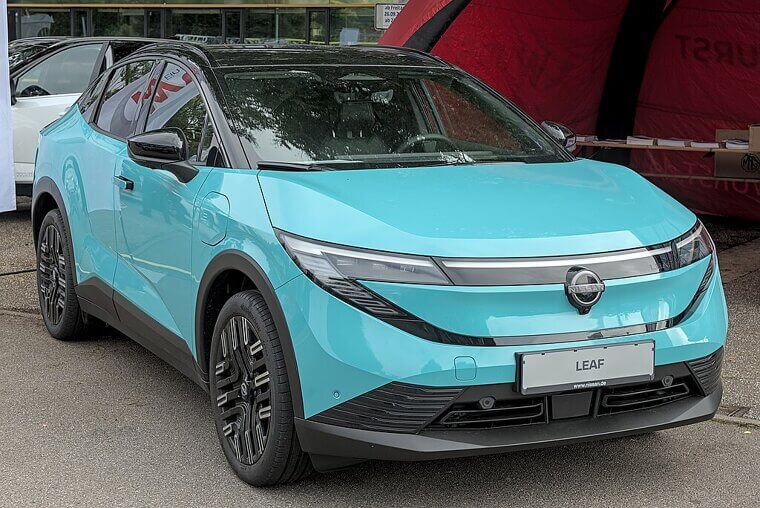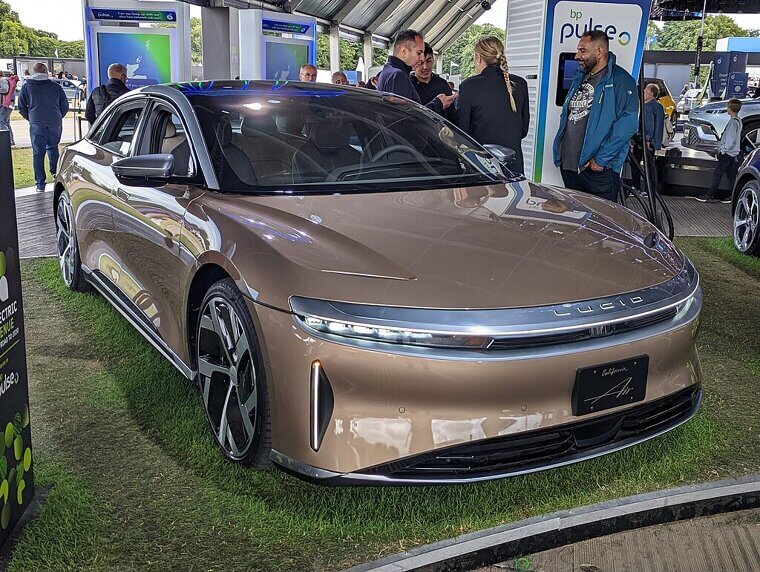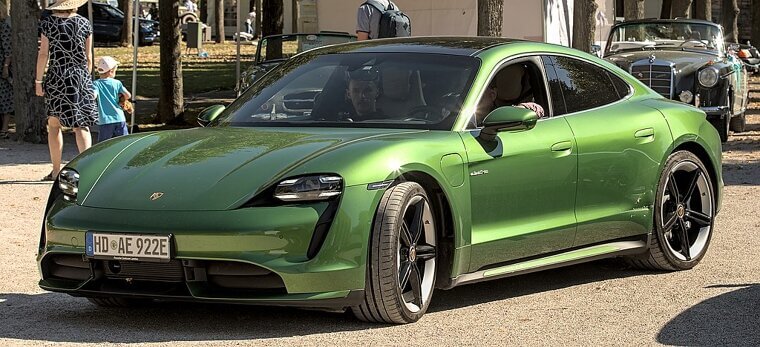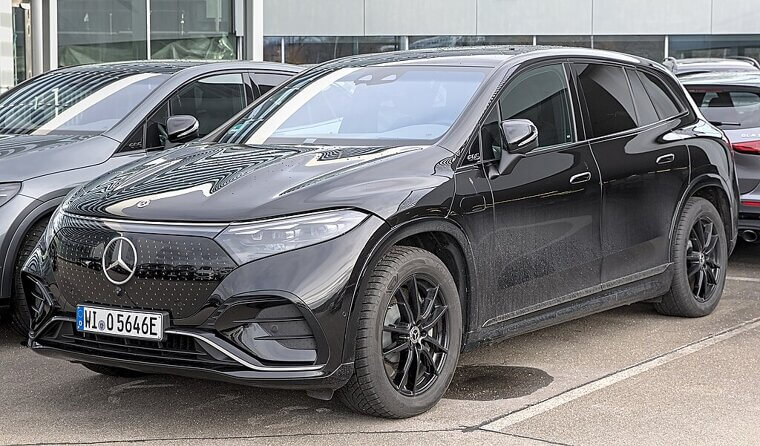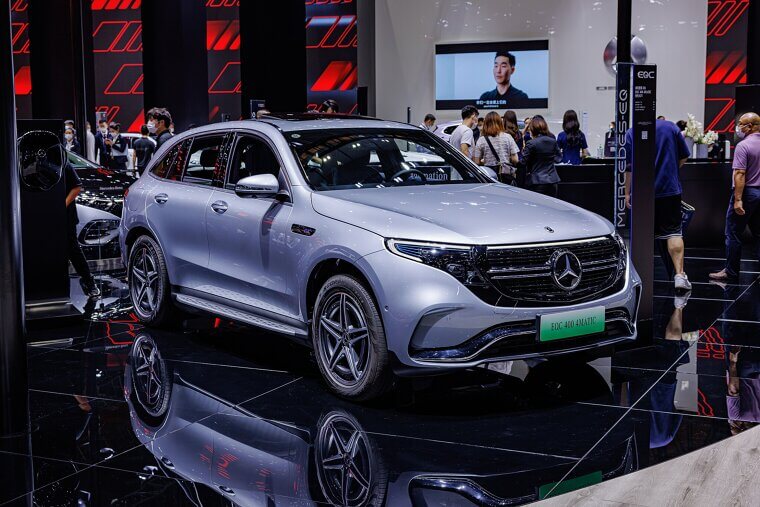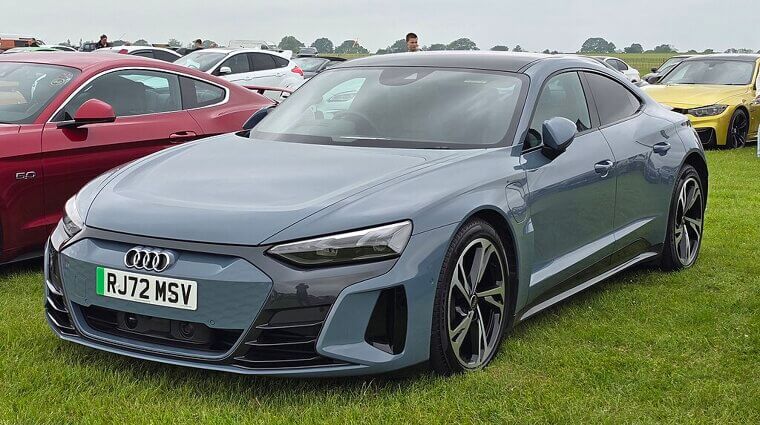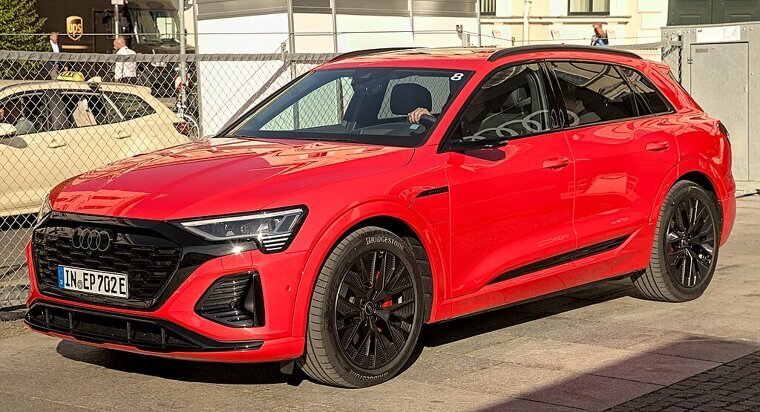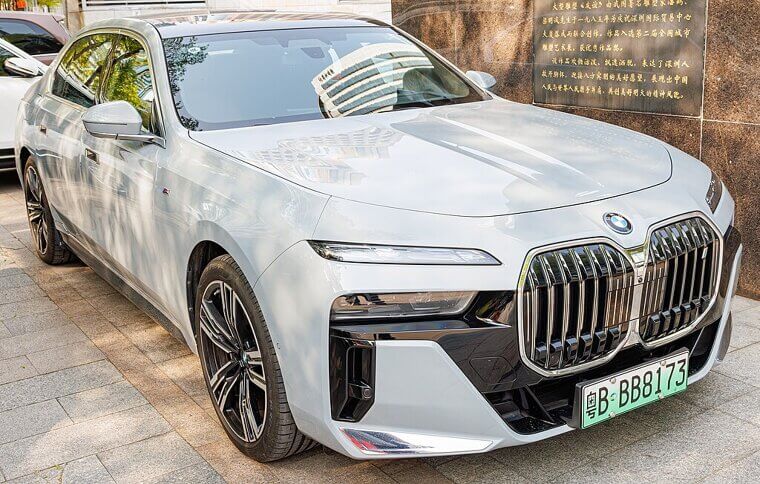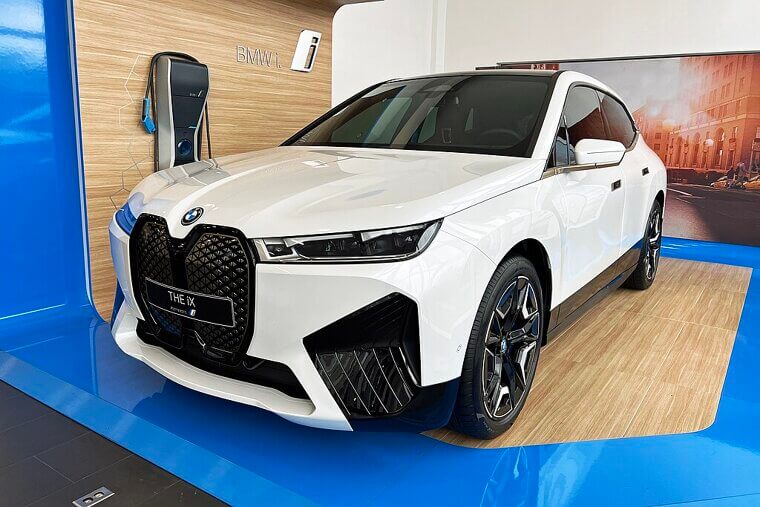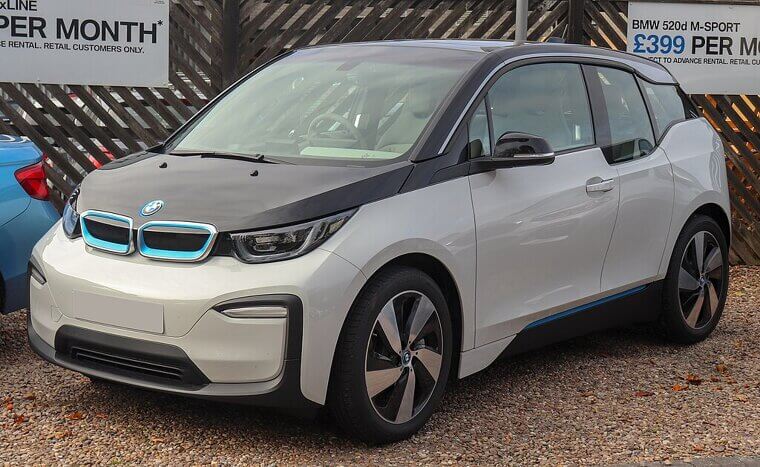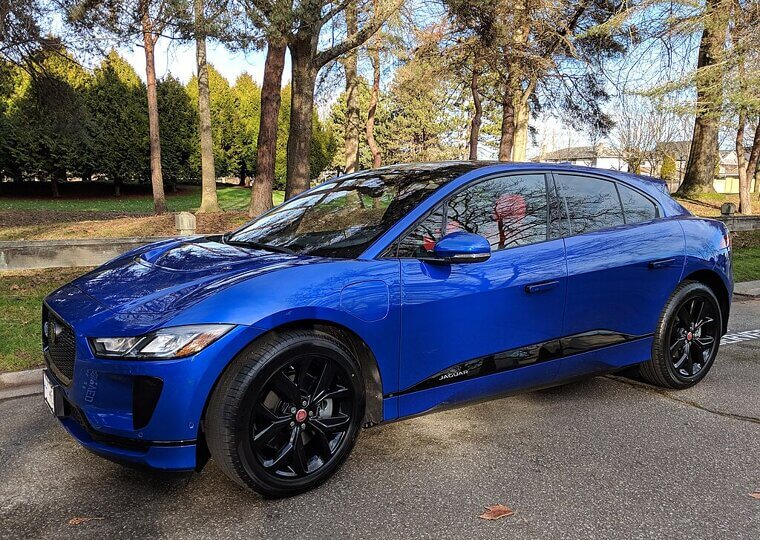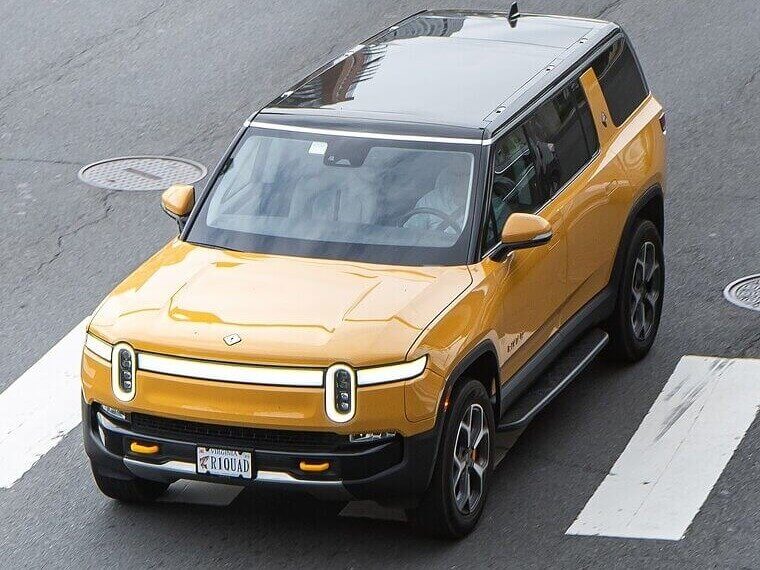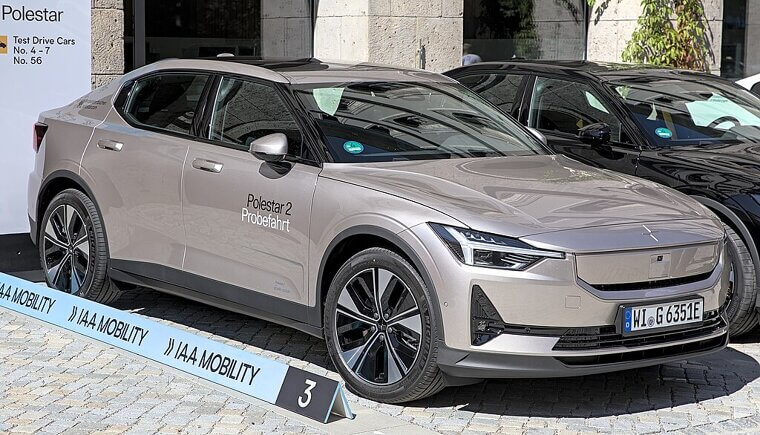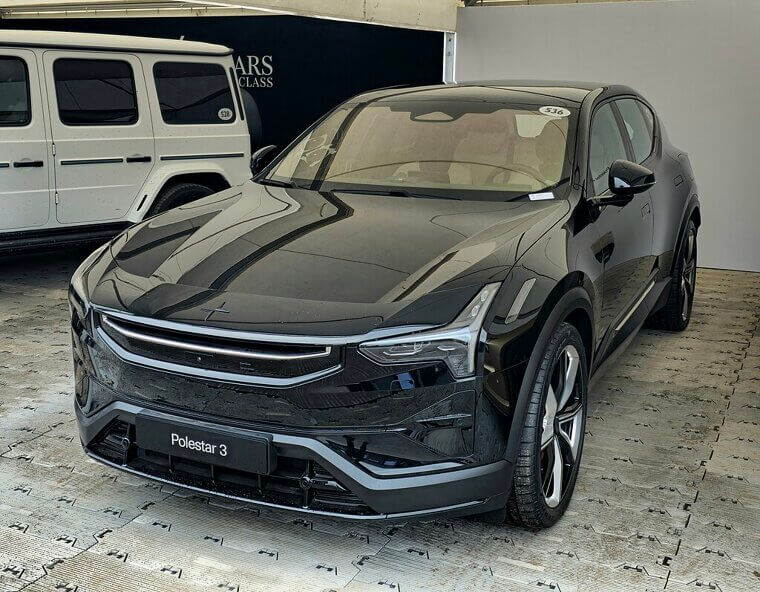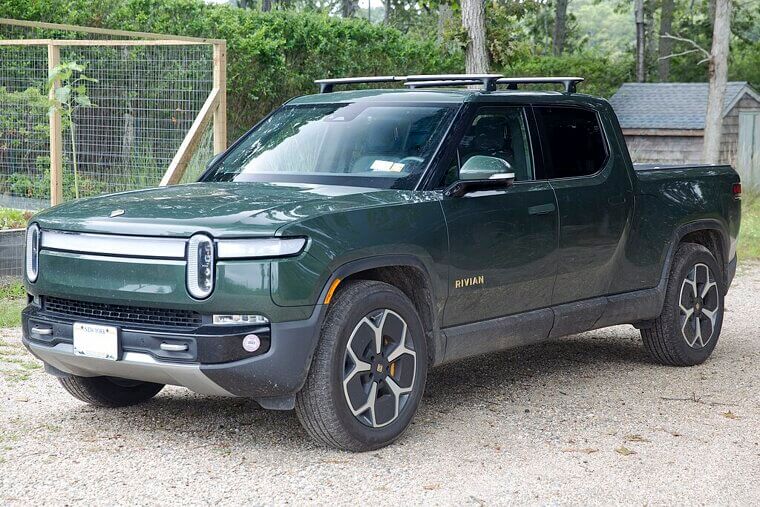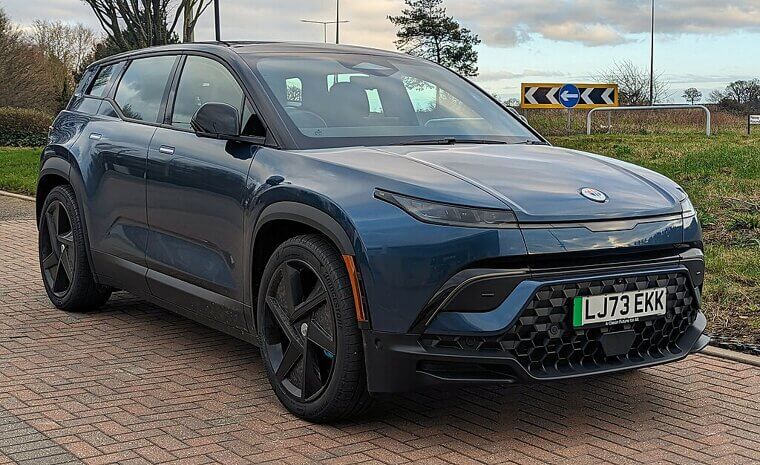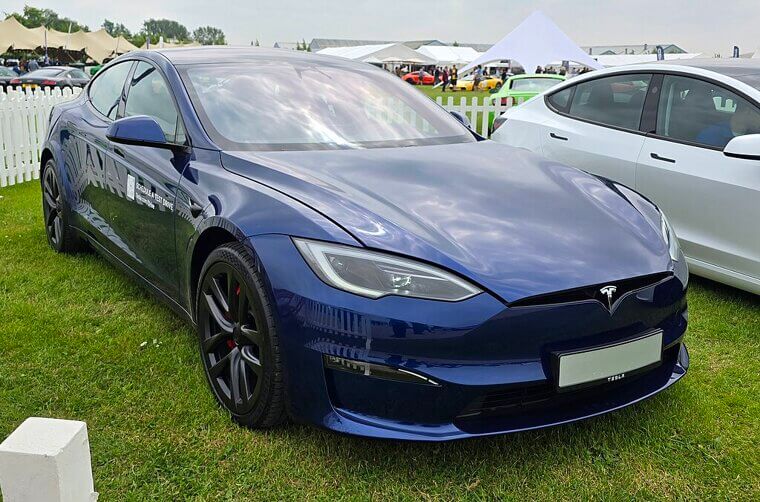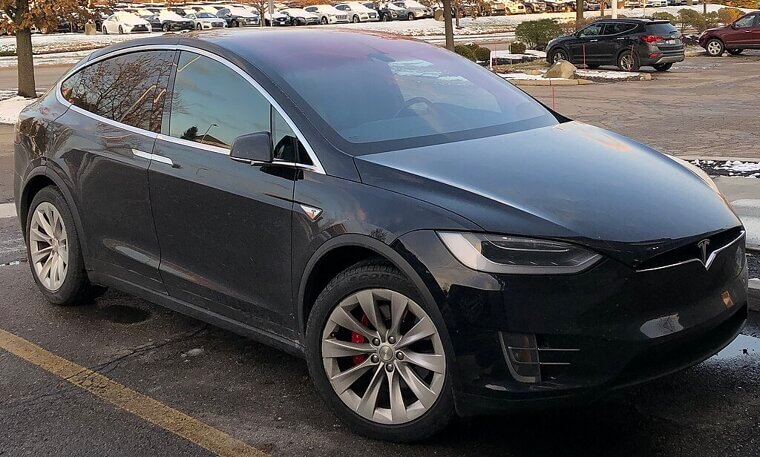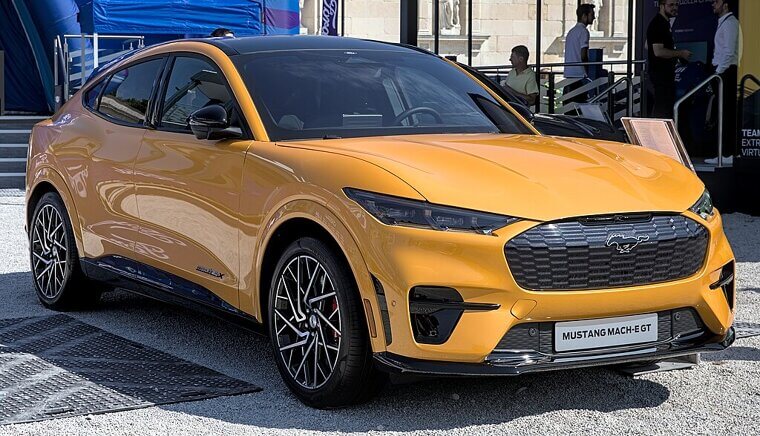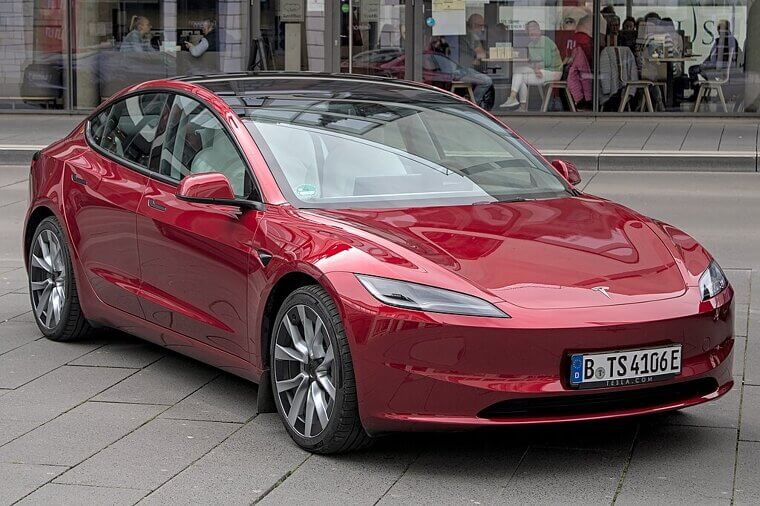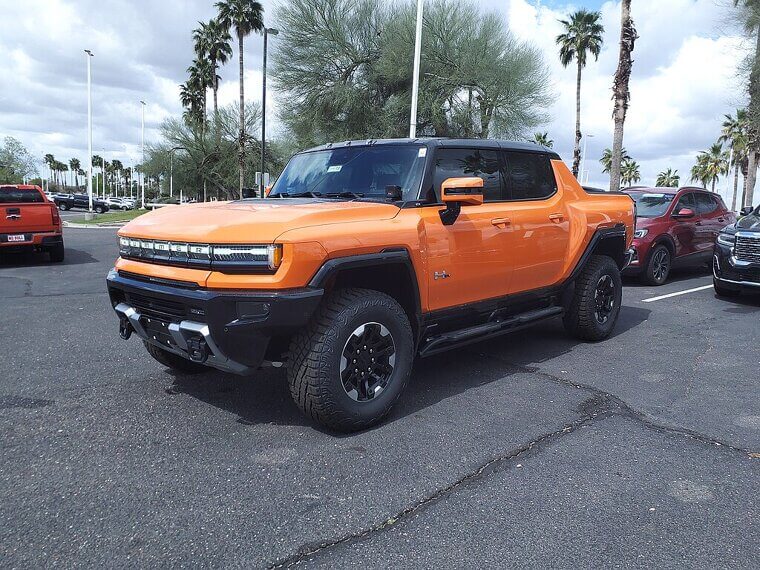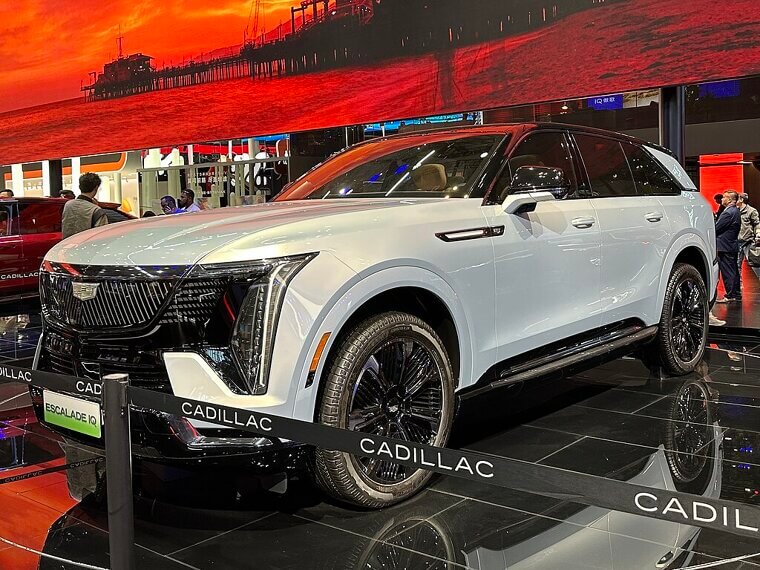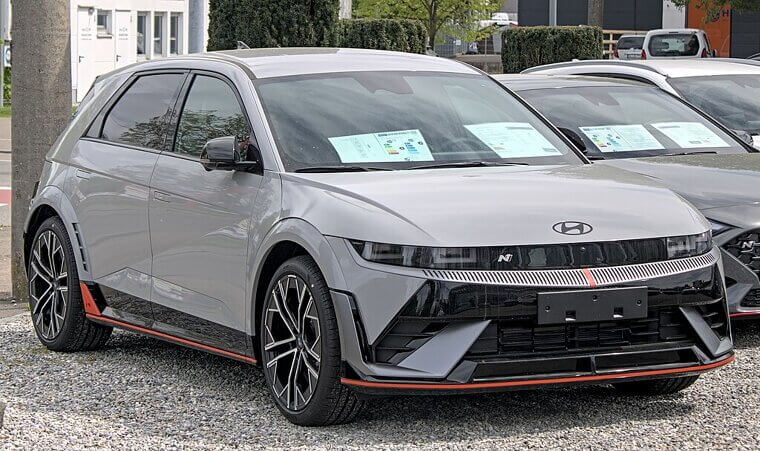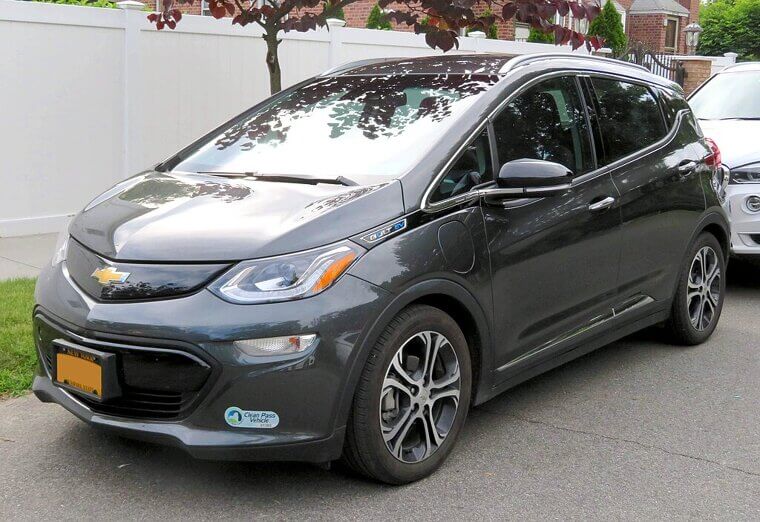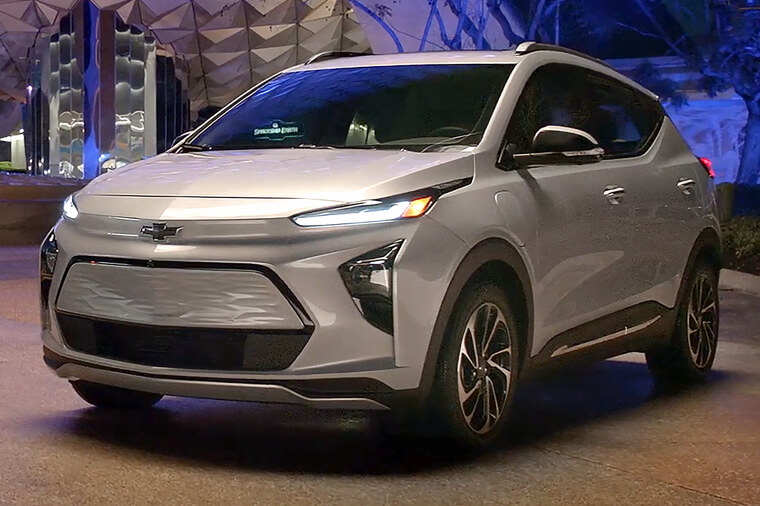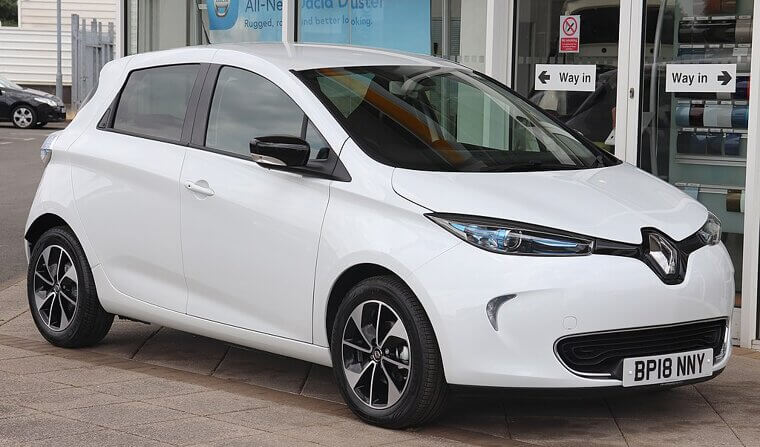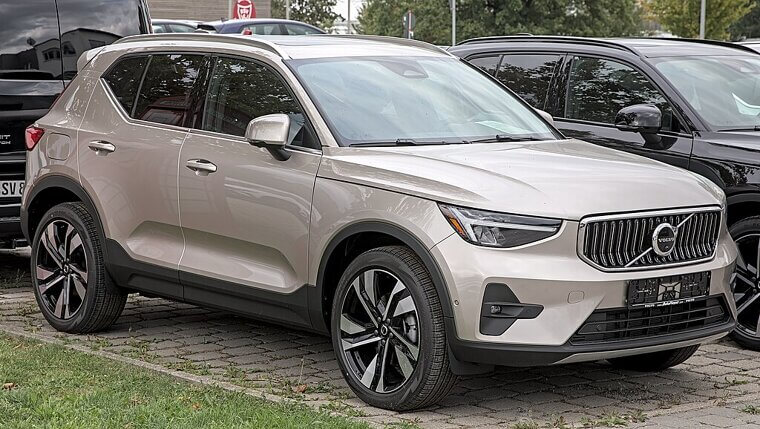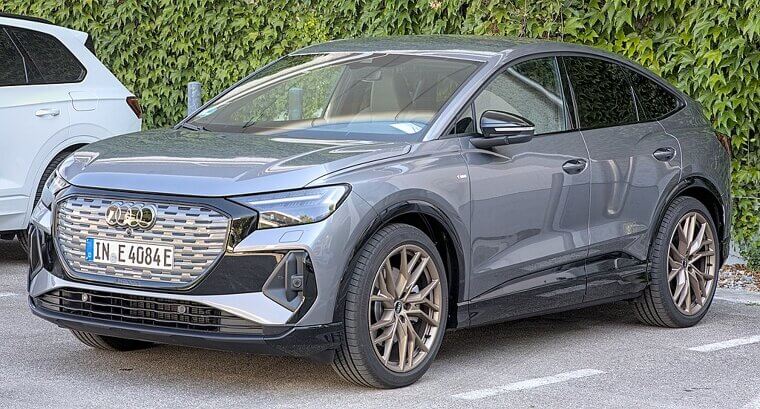Nissan Leaf (2011–2017)
The OG of mainstream EVs, the early Leaf deserves respect and a generous repair budget. Its pioneering battery tech now feels prehistoric, with replacements often exceeding the car’s value. Many owners simply drive them until the range fades, then park them as trophies of the electric revolution’s awkward adolescence.
Lucid Air (2022–2025)
Sleek, silent, and stunningly expensive, the Lucid Air isn’t just a car - it’s a rolling cathedral of technology! Unfortunately, when divine machinery breaks, the repair bills ascend just as fast. With ultra-complex electronics and hand-built components, even minor mishaps can leave owners with financial nightmares.
Lucid Air Sapphire (2024)
Lucid’s idea of turning “luxury” into “launch control,” the Sapphire’s breathtakingly quick, with three motors and a price tag that starts in the stratosphere. When it breaks (and it will, eventually) expect parts so specialized that few garages will look at it without trembling.
Porsche Taycan (2019–2025)
Owning a Taycan feels like holding lightning on a leash… until the maintenance bill bites. Porsche’s all-electric pride is engineered to perfection, which also means perfection-level repair prices. From proprietary battery systems to complex cooling loops, this EV guzzles cash whenever something goes slightly off-script.
Mercedes-Benz EQS (2022–2025)
The EQS is Mercedes’ electric crown jewel - a spaceship in sedan form. But when your spaceship needs a tune-up, the bill lands somewhere between “ouch” and “orbital re-entry.” Its high-end sensors, massive battery pack, and endless luxury electronics make even simple fixes out of this world.
Mercedes-Benz EQS SUV (2024)
Take the EQS sedan’s complexity, add a few thousand pounds of SUV bodywork, and you’ve got the EQS SUV: twice the size, twice the potential headache. Its repair costs blend off-road opulence with six-figure anxiety, turning a “family car” and a “family investment” when repairs visit.
Mercedes-Benz EQC (2019–2021)
Mercedes’ first electric SUV was a technological milestone - and an accountant’s nightmare. The EQC blended early-generation battery tech with high-end comfort, but age hasn’t been kind to repair prices. Parts are scarce, systems are finicky, and mechanics often need factory tools to diagnose problems.
Audi E-Tron (2019–2022)
The e-tron marked Audi’s confident stride into the EV market, but it also carried the growing pains of a first draft. Its cooling system and electronics are notoriously pricey to fix, and out-of-warranty repairs can rival small mortgage payments.
Audi E-Tron GT (2022–2024)
Audi’s e-tron GT shares a bloodline with the Porsche Taycan, and so does its repair philosophy: eye-watering precision. Every part screams “engineered masterpiece,” right up until it breaks. Even minor bodywork demands surgical accuracy, and the labor costs climb faster than its 0-60 time.
Audi Q8 E-Tron (2020–2023)
Audi’s flagship electric SUV looks and feels expensive, but stays true to that theme when the shop invoice arrives. With heavy batteries, dual motors, and intricate electronics, the Q8 e-tron’s maintenance bills can shock even seasoned luxury owners. This silent cruiser makes plenty of noise in your bank account.
BMW I7 (2022–2024)
The i7 is BMW’s electrified palace, built for comfort and coded in complexity. However, beneath its quilted seats hums an orchestra of sensors, processors, and battery modules that don’t come cheap. Repairing one is like performing heart surgery: delicate, expensive, and best not attempted without deep pockets.
BMW IX (2022–2025)
The iX is BMW’s electric statement piece - big, bold, and brimming with tech. Repairing one feels like stepping into a sci-fi lab: complex batteries, advanced driver systems, and panels that seem to require a PhD to replace.
BMW I3 (2015–2019)
Quirky, compact, and ahead of its time, the i3 was BMW’s early EV experiment (and a tricky one to fix). Its carbon-fiber frame makes repairs a delicate - and expensive - affair, while discontinued parts are becoming treasure-hunt rare, adding to the pain for both you and your wallet.
Jaguar I-Pace (2019–2023)
The I-Pace pounced into the EV world with style and speed, but its claws are sharp when it comes to upkeep. Jaguars are known for both luxury and for repair bills that roar. With complex liquid cooling and software quirks, this freeway feline’s purr doesn’t come cheap.
Rivian R1S (2022–2024)
The R1S takes Rivian’s tech-packed truck and stretches it into a family-sized expedition machine. Unfortunately, fixing one isn’t as easy as changing a tire by the campfire. Limited parts and a young repair network mean downtime can drag (and invoices climb).
Polestar 2 (2020–2024)
Minimalist Scandinavian design meets maximum repair cost potential. The Polestar 2 is sleek and futuristic, but even minor electronic issues can send owners into diagnostic limbo. Its Volvo bones bring safety, but its EV systems bring expense, like subscribing to a lifestyle of elegant unpredictability.
Polestar 3 (2024–2025)
The Polestar 3’s Nordic cool comes with an equally frosty repair quote. As the brand’s first SUV, it packs new hardware and experimental software. Early adopters love its innovation, but mechanics might need a translator just to decode its tech. Cutting-edge technology comes with frostbite.
Rivian R1T (2022–2024)
Built for adventure, the R1T is the Swiss Army knife of trucks - if every tool required specialized calibration! With quad motors, software updates galore, and parts still finding supply chains, Rivian ownership can turn “off-road capable” into “off-budget capable.”
Fisker Ocean (2022–2024)
The Fisker Ocean arrived on a wave of hype and a tide of teething troubles. With a short production run and spotty service support, repairs can turn into logistical odysseys. It’s stylish, sustainable, and surprisingly rare, so finding affordable parts is like fishing in shallow waters.
Tesla Model S (2020–2025)
Tesla’s Model S redefined the electric luxury sedan, but it also redefined the phrase “out-of-warranty dread.” Its tech-heavy systems and proprietary parts mean independent repairs are rare and pricey. One battery issue can cost as much as a small car, proving that innovation doesn’t always mean affordability.
Tesla Model X (2019–2024)
With its falcon-wing doors and futuristic charm, the Model X turns heads everywhere… until the doors stop working. Repairing them is famously fiddly, as is much of the car’s advanced tech. You’re not just getting an SUV; you’re signing up for a lifelong partnership with your service center.
Ford Mustang Mach-E (2021–2024)
Part muscle car, part modern experiment, the Mach-E is thrilling to drive and maddening to fix. Ford’s EV tech is evolving fast, but repair costs haven’t quite caught up with accessibility. From touchscreen malfunctions to drivetrain quirks, this pony demands premium care to keep galloping.
Tesla Model 3 (2018–2025)
The Model 3 brought EVs to the masses - and a few repair bills to match. Affordable at first glance, it hides expensive secrets beneath its minimalist shell. Battery replacements, cracked glass roofs, or faltering sensors can quickly wipe out any fuel savings.
GMC Hummer EV (2024)
The Hummer EV is less a vehicle and more a landmass with headlights. It’s enormous, powerful, and loaded with tech that looks great, until it breaks. With a 9,000-pound frame and a 200-kWh battery, simple repairs require industrial tools and heroic patience.
Cadillac Escalade IQ (2025)
Cadillac’s electric Escalade is luxury dialed up to “private jet.” It’s a masterpiece of design and excess, but even minor damage can cost dearly thanks to intricate lighting arrays and smart surfaces. Fixing one feels like restoring fine art: meticulous, expensive, and best left to specialists with velvet gloves.
Ford F-150 Lightning (2022–2024)
The Lightning brings America’s best-selling truck into the electric era, with the same appetite for costly repairs. Beneath its tough exterior sits a delicate network technology, so when something goes wrong your local mechanic might just give you a bill that leaves you shocked.
Hyundai Kona Electric (2018–2023)
Hyundai’s Kona Electric proved small EVs could pack serious range, but it also packed some notorious battery recall drama. With limited aftermarket parts and complex battery modules, repairs remain expensive despite the Kona’s humble looks. It’s the quiet commuter that occasionally bites like a budget-friendly shark.
Hyundai Ioniq 5 (2021–2024)
Retro-futurist styling and ultra-fast charging make the Ioniq 5 irresistible, but keeping it pristine isn’t cheap. Its cutting-edge 800-volt architecture requires specialized equipment, and that means specialized pricing. When everything works, it’s magic; when something fails, it’s like paying for a wizard’s house call.
Kia EV6 (2022–2025)
The EV6 shares its tech with the Ioniq 5 but adds sportier flair - and repair bills to match. Its tight bodywork, advanced electronics and costly high-voltage components are a reminder that affordable luxury isn’t always affordable to maintain. It’s a quick, stylish ride until the workshop calls you back.
Nissan Leaf Plus (2018–2020)
The Leaf Plus offered longer range and slightly more sophistication, but still carried the same high battery costs. Parts scarcity and aging tech make maintenance a gamble. It’s an EV for those who like to live sustainably (and financially on the edge).
Chevrolet Bolt EV (2017–2022)
Chevy’s plucky Bolt made electric driving accessible, but its reputation for battery recalls and thermal issues inflated repair costs. The small hatchback that once promised low running expenses sometimes delivers stunningly large repair quotes. It’s proof that early adoption often comes with a steep learning curve.
Chevrolet Bolt EUV (2022–2025)
The Bolt EUV added size, comfort, and complexity. Although it improved on its predecessor, its systems remain costly to diagnose and repair. With GM’s slow parts pipeline, even minor issues can stretch into expensive waits. It’s the big sibling who never learned to stop borrowing your wallet.
Renault Zoe (2016–2020)
Europe’s petite darling of the EV world hides a mischievous streak of repair costs. Battery leasing schemes, proprietary parts, and scarce service centers all conspire to inflate expenses. It’s adorable, but like a French pastry, it’s delicate to handle and ruinous if you drop it.
Volvo XC40 Recharge (2019–2023)
Underneath its clean, confident lines, the XC40 Recharge hides a labyrinth of sensors and Swedish sophistication. It’s safe, smart, and serenely silent, but fixing one is far from relaxing. Battery and software repairs demand expert care, making this SUV as pricey to maintain as it is pleasant to drive.
Audi Q4 E-Tron (2024–2025)
Audi’s compact EV might look practical, but its repair costs are anything but. With premium materials and tightly integrated tech, simple fixes turn into lengthy operations. It’s a sleek, family-friendly crossover that proves “entry-level luxury” still means “bring your banker.”

